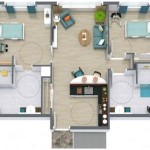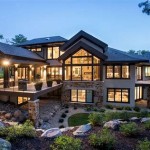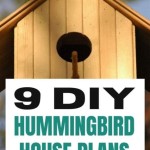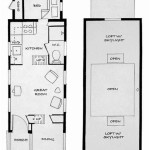House Plans With Safe Rooms refer to architectural designs that incorporate dedicated rooms or spaces within a house that are specifically engineered to provide protection and shelter during emergencies or dangerous situations. These rooms are typically constructed with reinforced walls, impact-resistant windows, and secure doors, creating a fortified and isolated environment that can withstand natural disasters, acts of violence, or intrusion.
In an era marked by increasing natural disasters and heightened security concerns, incorporating safe rooms into house plans has become a prudent consideration. For instance, during a tornado or hurricane, a safe room can serve as a refuge, providing protection from high winds and debris. Similarly, in the event of a home invasion or active shooter scenario, a secure safe room can offer a safe haven and a place to seek shelter until help arrives.
When considering house plans with safe rooms, there are several key points to keep in mind:
- Reinforced walls
- Impact-resistant windows
- Secure doors
- Isolated location within the house
- Ventilation and communication systems
- Adequate supplies (food, water, first aid)
- Accessibility for all household members
- Clear escape route
- Regular maintenance and inspection
By incorporating these elements into the design, homeowners can create a safe and secure space that provides peace of mind during emergencies.
Reinforced walls
Reinforced walls are a crucial component of safe rooms, providing exceptional strength and resilience against impact and penetration. They are typically constructed using multiple layers of materials, including concrete, steel, or composite panels, which are designed to absorb and disperse force.
- Concrete walls: Concrete is a widely used material for reinforced walls due to its inherent strength and durability. It can withstand significant impact and pressure, making it an ideal choice for safe rooms.
- Steel walls: Steel is another popular option for reinforced walls, particularly in prefabricated safe rooms. Steel plates or panels are welded or bolted together to create a robust and impenetrable barrier.
- Composite walls: Composite materials, such as fiberglass-reinforced plastic (FRP) or ballistic panels, offer a combination of strength and flexibility. They are often used in conjunction with concrete or steel to create walls that are both impact-resistant and lightweight.
- Multi-layer walls: Multi-layer walls provide enhanced protection by combining different materials. For instance, a safe room wall may consist of an outer layer of concrete, followed by a layer of steel, and an inner layer of FRP.
The thickness and composition of reinforced walls vary depending on the level of protection required. However, safe room walls typically range from 6 to 12 inches in thickness and are designed to withstand the impact of high-velocity projectiles, explosions, and other extreme forces.
Impact-resistant windows
Impact-resistant windows are specifically designed to withstand the impact of high-velocity projectiles, debris, and other objects that may be encountered during storms, explosions, or other emergencies. They are a crucial element of safe rooms, providing protection against shattered glass and potential injuries caused by flying shards.
Impact-resistant windows are constructed using several layers of laminated glass. A protective film is sandwiched between the layers of glass, which helps to hold the glass together even when it is struck by a projectile. The thickness and composition of the glass layers can be customized to meet different levels of protection requirements.
In addition to laminated glass, impact-resistant windows may also incorporate other features to enhance their protective capabilities. These features include:
- Reinforced frames: The window frames are typically made of sturdy materials, such as steel or aluminum, to provide additional support and prevent the window from being forced open.
- Shatterproof glazing: A thin layer of shatterproof glazing may be applied to the interior surface of the glass. This glazing helps to keep the glass shards in place even if the window is broken.
- Security bars or grilles: For added security, some impact-resistant windows may be fitted with security bars or grilles. These bars or grilles can help to deter intruders and prevent forced entry.
Impact-resistant windows are an essential component of safe rooms, providing a secure barrier against external threats while maintaining visibility and natural light.
Secure doors
Secure doors are a vital component of safe rooms, providing aand impenetrable barrier against unauthorized entry. They are typically constructed using heavy-duty materials and incorporate multiple layers of protection to withstand forced entry attempts and ballistic threats.
The core of a secure door is typically made of solid steel, which provides exceptional strength and resistance to impact and penetration. The door is often reinforced with additional layers of steel or composite materials to enhance its protective capabilities. The door frame is also reinforced to ensure that the door cannot be easily pried open or removed from its hinges.
In addition to the core materials, secure doors may also incorporate the following features to enhance security:
- Multiple locking mechanisms: Secure doors typically have multiple locking mechanisms, including deadbolts, key locks, and electronic locks. These locks engage with the door frame at multiple points, making it extremely difficult to force open.
- Ballistic panels: Ballistic panels can be added to the door to provide protection against high-velocity projectiles. These panels are typically made of lightweight and durable materials, such as Kevlar or polyethylene, which can absorb and dissipate the energy of bullets.
- Security hinges: Security hinges are designed to resist forced entry attempts. They are typically made of heavy-duty steel and are concealed within the door frame, making it difficult for intruders to access and manipulate them.
Secure doors are an essential element of safe rooms, providing a robust and reliable barrier against unauthorized entry and potential threats.
Isolated location within the house
The isolated location of a safe room within the house is a crucial design consideration that enhances its effectiveness and security. Safe rooms should be situated in an area that is not easily accessible from the outside of the house and is protected from potential entry points, such as windows and doors.
Ideally, safe rooms should be located in the interior of the house, away from exterior walls and windows. This central location provides multiple layers of protection, as intruders would need to penetrate multiple barriers to access the safe room. Additionally, interior rooms are less likely to be exposed to projectiles or debris from outside.
Another important consideration is to avoid placing safe rooms near high-traffic areas or rooms that are frequently used, such as living rooms or kitchens. This helps to maintain the secrecy and isolation of the safe room, making it less likely to be discovered or targeted by intruders.
Finally, it is essential to ensure that the safe room has a clear and unobstructed escape route. This escape route should lead to a secure area outside of the house, such as a garage or a neighbor’s property. The escape route should be planned in advance and practiced by all household members to ensure a safe and efficient evacuation in an emergency.
Ventilation and communication systems
Ventilation and communication systems are essential components of safe rooms, ensuring the well-being of occupants during an emergency. Proper ventilation provides a continuous supply of fresh air, preventing the buildup of stale air, carbon dioxide, and other harmful gases. Effective communication systems allow occupants to communicate with the outside world, enabling them to call for help or provide updates on their situation.
Ventilation systems in safe rooms typically utilize a combination of passive and active measures. Passive ventilation relies on natural airflow through vents or ducts to exchange indoor and outdoor air. Active ventilation uses mechanical fans or blowers to circulate air and maintain a positive pressure within the safe room. This positive pressure helps to keep out smoke, fumes, and other contaminants from entering the safe room.
Communication systems in safe rooms are designed to provide reliable communication with the outside world, even when regular phone lines or cellular networks are disrupted. These systems may include:
- Landlines: Safe rooms can be equipped with dedicated landlines that are independent of the main phone system in the house. These landlines can be used to call for help or communicate with emergency responders.
- Cellular signal boosters: Cellular signal boosters can be installed in safe rooms to enhance cellular reception and allow occupants to use their mobile phones to make calls or send text messages.
- Satellite communication devices: Satellite communication devices, such as satellite phones or satellite messengers, can be used to communicate with the outside world even when other communication systems are unavailable.
In addition to these primary systems, safe rooms may also be equipped with backup power sources, such as generators or battery packs, to ensure that ventilation and communication systems remain operational during power outages.
Proper ventilation and communication systems are essential for the safety and well-being of occupants during an emergency. By incorporating these systems into safe room designs, homeowners can create a safe and secure space that provides peace of mind and a means to communicate and seek help when needed.
Adequate supplies (food, water, first aid)
Adequate supplies of food, water, and first aid are essential for the well-being of occupants during an emergency. Safe rooms should be stocked with non-perishable food items, water, and essential medical supplies to sustain occupants for an extended period of time.
- Food:
Non-perishable food items, such as canned goods, energy bars, and dried fruit, should be stored in the safe room. These items should be high in calories and nutrients to provide sustained energy. It is important to store a variety of food items to meet the dietary needs of all occupants.
- Water:
A sufficient supply of water is crucial for survival. Safe rooms should be stocked with at least one gallon of water per person per day. Water can be stored in plastic bottles or jugs, and it is important to rotate the supply regularly to ensure freshness.
- First aid kit:
A comprehensive first aid kit should be included in the safe room to treat minor injuries and medical emergencies. The kit should include bandages, antiseptic wipes, pain relievers, and other essential medical supplies.
- Medications:
If any occupants rely on prescription medications, it is important to store an adequate supply of these medications in the safe room. Additionally, over-the-counter medications, such as antihistamines and pain relievers, should be included.
Properly stocking a safe room with food, water, and first aid supplies is essential for ensuring the well-being of occupants during an emergency. By planning ahead and preparing a comprehensive supply kit, homeowners can create a safe and secure space that provides peace of mind and the resources needed to sustain life during challenging times.
Accessibility for all household members
Safe rooms should be accessible to all household members, including individuals with disabilities, seniors, and children. Accessibility features should be incorporated into the design of the safe room to ensure that everyone can safely enter, exit, and remain in the space during an emergency.
- Ramp or stair lift:
For individuals who use wheelchairs or have difficulty climbing stairs, a ramp or stair lift should be installed to provide access to the safe room. The ramp or stair lift should be wide enough to accommodate wheelchairs and should have a non-slip surface for safety.
- Wide doorways:
All doorways leading into and within the safe room should be wide enough to accommodate wheelchairs and other mobility aids. Standard doorways are typically 32 inches wide, but for accessibility, doorways should be at least 36 inches wide.
- Grab bars:
Grab bars should be installed in strategic locations throughout the safe room, such as near the entrance, toilet, and shower. Grab bars provide support and stability for individuals with mobility impairments or balance issues.
- Visual and auditory alarms:
In addition to audible alarms, safe rooms should also be equipped with visual alarms, such as strobe lights or vibrating pads. This is important for individuals who are deaf or hard of hearing to be alerted to an emergency and take appropriate action.
By incorporating these accessibility features into the design of safe rooms, homeowners can ensure that all household members have equal access to a safe and secure space during an emergency. Accessibility is not only a matter of compliance but also a fundamental aspect of inclusivity and ensuring the well-being of all occupants.
Clear escape route
A clear escape route is a critical component of any safe room design, ensuring that occupants can safely evacuate the space in the event of an emergency. The escape route should be planned in advance and should be practiced by all household members to ensure familiarity and efficiency.
The escape route should be a direct and unobstructed path leading to a safe area outside of the house, such as a garage, a neighbor’s property, or a designated meeting place. It is important to avoid escape routes that pass through areas that may be blocked or compromised during an emergency, such as hallways or rooms that are likely to be filled with smoke or debris.
The escape route should be clearly marked with glow-in-the-dark signs or other visual indicators to guide occupants in low-visibility conditions. Additionally, the escape route should be designed to accommodate individuals with disabilities or limited mobility, such as by providing ramps or stair lifts if necessary.
Regular drills and practice evacuations should be conducted to ensure that all household members are familiar with the escape route and can evacuate the safe room quickly and safely. These drills should simulate different emergency scenarios, such as a fire, an intruder, or a natural disaster, to prepare occupants for a variety of potential threats.
By carefully planning and practicing a clear escape route, homeowners can create a safe and secure space that provides peace of mind and a means to evacuate quickly and safely in the event of an emergency.
Regular maintenance and inspection
Regular maintenance and inspection of safe rooms are crucial to ensure their proper functioning and readiness during an emergency. Safe rooms should be inspected and maintained on a regular basis, following the manufacturer’s guidelines and industry best practices.
- Inspect seals and gaskets:
The seals and gaskets around doors, windows, and ventilation systems should be inspected regularly for any signs of wear, damage, or deterioration. These seals and gaskets are essential for maintaining the airtightness and integrity of the safe room, preventing the ingress of smoke, fumes, or other contaminants.
- Test ventilation systems:
The ventilation systems in safe rooms should be tested regularly to ensure that they are functioning properly and providing adequate ventilation. This involves checking the airflow, filters, and any mechanical components to make sure they are operating as intended.
- Inspect structural integrity:
The structural integrity of the safe room should be inspected periodically for any signs of damage or deterioration. This includes checking the walls, ceiling, floor, and any supporting structures for cracks, leaks, or other issues that could compromise the integrity of the space.
- Check emergency supplies:
The emergency supplies stored in the safe room, such as food, water, first aid kits, and medications, should be checked regularly for expiration dates and to ensure that they are in good condition. It is important to replace or replenish any expired or depleted items to maintain a well-stocked emergency supply.
By adhering to a regular maintenance and inspection schedule, homeowners can ensure that their safe rooms are fully operational and ready to provide protection and shelter during an emergency. Neglecting proper maintenance can compromise the effectiveness of the safe room and put occupants at risk.










Related Posts








